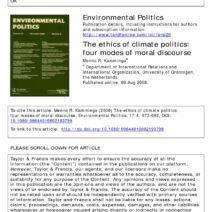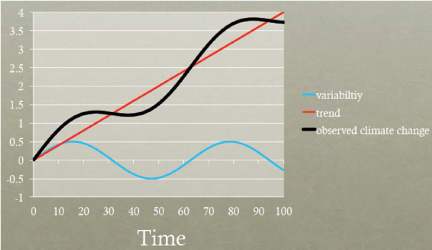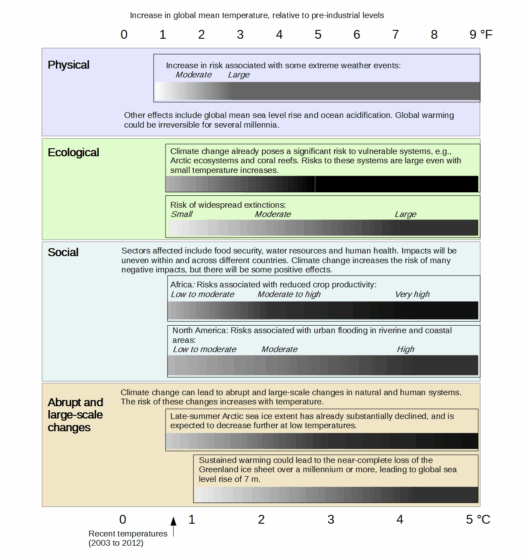Understanding Internal Variability in Climate Change
Climatic phenomena are often perceived through a lens that emphasizes long-term trends; however, internal variability plays an equally crucial role in the way climate change manifests. It includes the natural fluctuations within the Earth’s climate system that occur over varying time scales. Grasping these variations paves the way for a comprehensive comprehension of climate dynamics and aids in refining models that predict future scenarios.
The complexities of climate systems cannot be understated. They are influenced by several factors such as ocean currents, atmospheric patterns, and land surface interactions. Internal variability operates independently of external forces like greenhouse gas emissions, thereby compelling us to distinguish between what can be attributed to anthropogenic influence and what is part of normal climatic oscillation.
When addressing internal variability, one often encounters terms such as “natural climate variability,” which refers to the inherent, chaotic nature of the atmosphere and climate systems. Key phenomena include the El Niño-Southern Oscillation (ENSO) and the North Atlantic Oscillation (NAO), both of which induce significant fluctuations in weather patterns and temperature regimes, shaping our immediate environmental conditions.
Implications of Internal Variability
Internal variability bears significant implications for climate projections and assessments. While external factors, like greenhouse gas emissions, are steadily rising and escalating concerns regarding climate change, internal variability can obscure or amplify these climate trends temporarily. This variability can lead to short-term climate conditions that deviate from long-term trends, such as transient cooling periods or drought events, which can mislead public perception and policy response efforts.
An example can be drawn from the past two decades, where certain regions experienced anomalously warm winters or uncharacteristic flooding events. These instances of heightened internal variability can often be mistaken for definitive indicators of a shifting climate, when in fact they might coincide with a broader natural variability pattern.
This dynamic interplay makes it imperative for researchers and policymakers to parse through these data, enhancing their predictive capabilities without falling prey to sensationalism or misunderstanding crops of data. An awareness of variability ensures that responses to climate challenges are appropriately tailored rather than knee-jerk reactions to fleeting climatological anomalies.
Types of Internal Variability
Various forms of internal variability shape climate patterns, and understanding them requires a deeper dive into their mechanisms.
Ocean-Atmosphere Interactions
One of the most significant contributors to internal variability stem from interactions between the ocean and the atmosphere. The ENSO, which oscillates between warm (El Niño) and cold (La Niña) phases, significantly affects global weather patterns. These oscillations create ripples across the climate system, facilitating shifts in temperature and precipitation that can have outsized effects on human and natural systems alike.
Moreover, the ocean’s thermal inertia contributes to slower response times in atmospheric temperatures, leading to conditions where warming trends may not be immediately observable for several years, even as greenhouse gases accumulate.
Decadal Variability
Climate patterns can also fluctuate on decadal time scales. The Pacific Decadal Oscillation (PDO) is an example of a long-term climate pattern that alternates between warm and cool phases, influencing sea surface temperatures and leading to significance in regional climate variations. Such decadal rhythms underscore the critical need to examine climate data over extended timelines to distinguish genuine shifts in climate from temporary fluctuations.
Seasonal Variability
Seasonal climate variability expresses itself through annual oscillations related to the tilt of the Earth and its orbit around the sun. Events like the Indian monsoon exhibit tremendous internal variability, where precipitation patterns can contradict long-term drying trends, accentuating the complexity of predicting rainfall or temperature changes based purely on historical data.
Linking Internal and External Factors
To fully appreciate the nuances of climate change, one must recognize that internal variability does not operate in a vacuum. Instead, it interacts with external forcing factors. For instance, even a backdrop of long-term warming could be punctuated by significant periods of cold snaps, driven by internal variability. As such, discerning the fabrics of climate change requires an integrative approach that accounts for these multifaceted influences.
This connection underscores the importance of employing advanced climate models that not only incorporate anthropogenic factors but also account for the complexities of internal variability. The challenge remains for scientists to distill this intricate web of influences into actionable insights.
Conclusion: The Significance of Understanding Internal Variability
Comprehending internal variability is paramount, not just for climate scientists but for informed citizens and policymakers as well. This understanding fosters a richer dialogue about climate change, shifting focus from alarmist rhetoric to a nuanced appreciation of natural climatic eccentricities. The effect of acknowledging internal variability allows us to create more resilient societies that can adeptly navigate both short-term disruptions and long-term shifts.
Ultimately, elevating the discourse around climate change to include internal variability will empower communities to engage in sustainable practices through informed decision-making, strengthening their adaptive capacities amid ongoing environmental transformations. As we move forward, cultivating this understanding must remain a priority in our collective environmental agenda.








